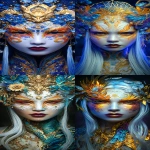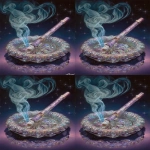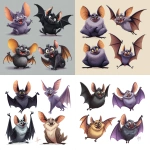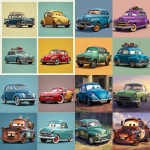Explore the Best AI Image Gallery

AI: The New Creative Collaborator in Graphic Design
The world of graphic design is undergoing a seismic shift, driven by the rapid advancements in artificial intelligence (AI). No longer confined to the realm of science fiction, AI is becoming an integral part of the creative process, empowering designers with new tools and capabilities.
From generating stunning visuals to streamlining workflows, AI is reshaping the landscape of graphic design. This blog post delves into the impact of AI on this dynamic industry, exploring its potential uses, ethical considerations, and future trends.
Potential Uses of AI in Graphic Design
AIs versatility makes it a valuable asset for graphic designers across various tasks:
- Logo Design: AI algorithms can analyze design principles and generate multiple logo concepts based on specific requirements, saving designers time and effort.
- Image Generation: Tools like DALL-E 2 and Midjourney allow users to create unique images from text descriptions, opening up endless possibilities for conceptualization.
- Typography and Font Creation: AI can analyze existing fonts and generate new ones, pushing the boundaries of typographic design.
- Layout and Composition: AI-powered tools can suggest optimal layouts and compositions based on design principles and user preferences.
- Color Palette Suggestions: AI algorithms can analyze images and recommend harmonious color palettes that enhance visual appeal.
The Ethical Considerations of AI in Graphic Design
While AI offers immense potential, its crucial to address the ethical considerations surrounding its use in graphic design:
- Copyright and Ownership: Questions arise regarding copyright ownership when AI generates content. Establishing clear guidelines is essential.
- Bias and Representation: AI algorithms can inherit biases from the data they are trained on, potentially leading to unfair or stereotypical representations.
- Transparency and Explainability: The decision-making processes of some AI models can be opaque. Its important to strive for transparency and explainability in AI-driven design.
- Job Displacement: While AI can augment designer roles, concerns exist about potential job displacement. Upskilling and reskilling will be crucial.
Future Trends in AI and Graphic Design
The future of AI in graphic design is brimming with possibilities:
- Personalized Design Experiences: AI will enable highly personalized design experiences, tailoring visuals to individual preferences and contexts.
- Generative Adversarial Networks (GANs):** GANs will continue to advance, producing even more realistic and creative designs.
- AI-Powered Collaboration: **AI will facilitate seamless collaboration between designers and clients, streamlining the design process.
- Augmented Reality (AR) and Virtual Reality (VR) Integration:** AI will enhance AR and VR experiences by generating interactive and dynamic visuals.
Conclusion
AI is poised to revolutionize graphic design, empowering designers with new tools and capabilities. By embracing its potential while addressing ethical considerations, we can unlock a future where creativity flourishes in tandem with technological advancements.

](https://images.ai-img.art/thumbnails/150/2fbd98ecfc425cfc1597779121e1c0305437067779e9c471eb64ff9615d5be98.webp)

](https://images.ai-img.art/thumbnails/150/269414b0e541026702e9e67c67602c96162f37ff460a388b3b36314c8fc936dd.webp)








](https://images.ai-img.art/thumbnails/150/8d1fe5a7a49cfc96747182431a853357913286d89258383caab2d3b4681afcb5.webp)




](https://images.ai-img.art/thumbnails/150/485c8b1c747827bdc9a962f8a1919b3c259b18dd263b260208a1eae19fb85e07.webp)




](https://images.ai-img.art/thumbnails/150/3020b8c2b6d9be07e042357107af1de10deb274a41d2b0f332684ad4b532a702.webp)
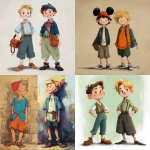




](https://images.ai-img.art/thumbnails/150/5197af8969d850e2a43e141d41e482ccbceedebceb2a4caf9f098f943f9d1b0f.webp)





